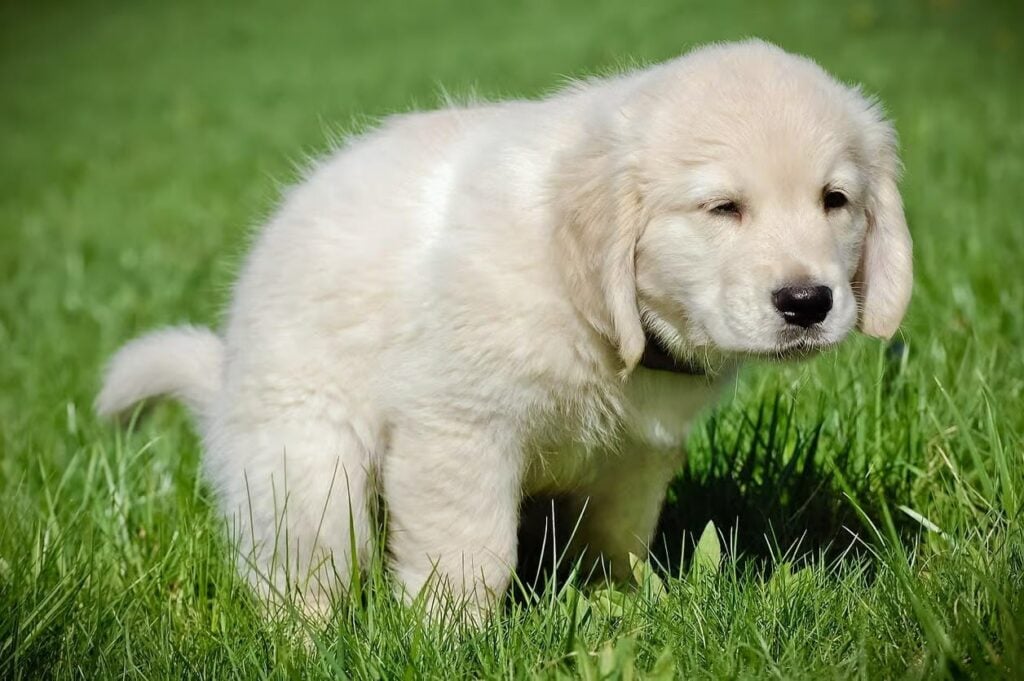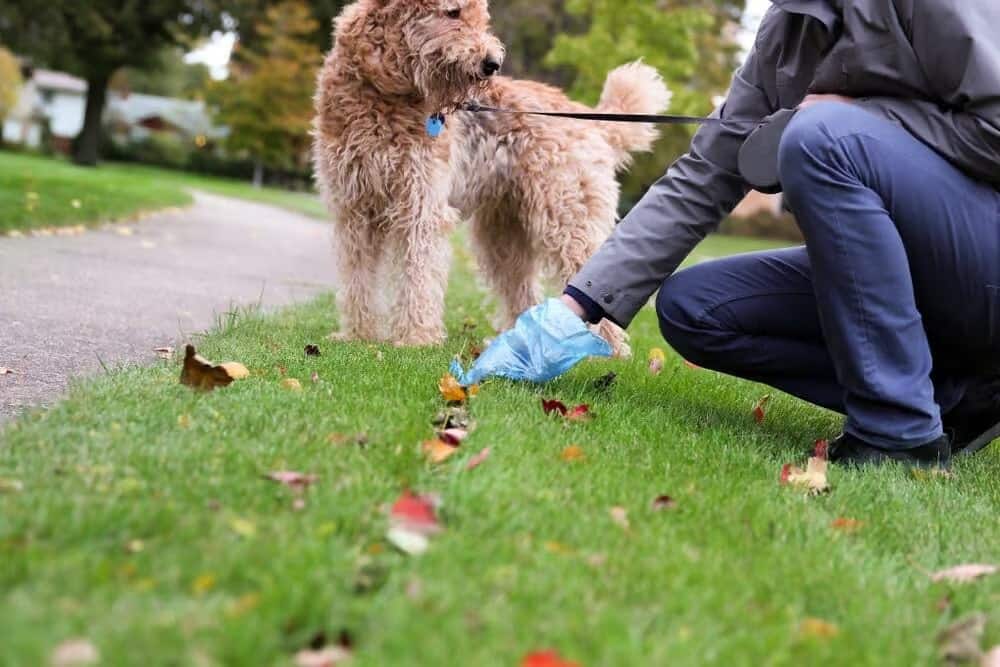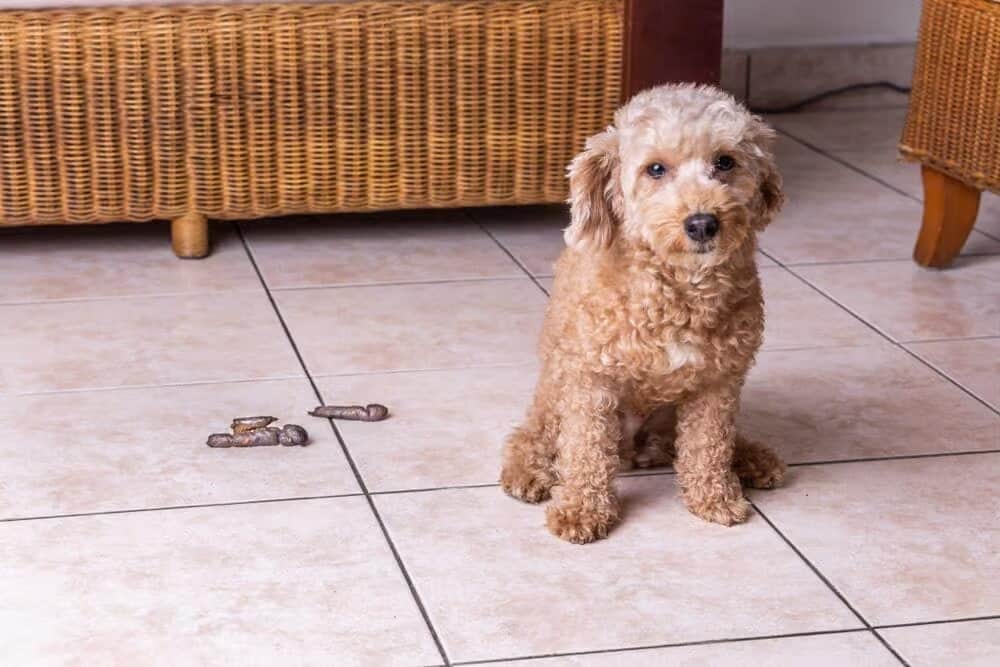Absolutely! Here’s a comprehensive guide about dog poop, combining the best aspects of the provided texts and addressing their shortcomings:
Understanding Dog Poop for Optimal Pet Health
Taking the time to observe your dog’s poop might seem odd, but it’s a simple, yet powerful way to monitor their digestive health and catch potential problems early. Remember:
- Responsible Disposal: Always clean up after your dog using biodegradable bags.
- Observe Changes: Monitor your dog’s stool for deviations in color, consistency, frequency, and content.
Decoding Dog Poop
- Ideal Poop: Should be chocolate brown, firm, and segmented like a caterpillar.
- Consistency:
- Watery/Runny: Stress, parasites, infections, food changes.
- Very Loose: Dietary issues, parasites, allergies.
- Pebble-like: Dehydration, large intestine issues.
- Large Amounts: Highly processed foods (kibble) with high carbs/fiber content.
- Smelly: Poor digestion of certain nutrients, putrefying bacteria in the gut.
- Mucus: Irritation in the large intestine, potentially due to parasites, infections, or dietary problems.
- Blood in Stool:
- Bright red: Bleeding lower in the digestive tract. Serious issue requiring a vet visit.
- Black/Tarry: Bleeding higher up in the digestive tract, like the stomach. Seek vet care immediately.
- Causes: Parvovirus, parasites, foreign objects, cancer, injuries.
- Poop Color Guide:
- Black: Bleeding in the upper digestive tract (stomach ulcers, etc.).
- Green: Possible parasites (like giardia) or overconsumption of grass.
- Yellow: Food sensitivities, digestive issues (liver, pancreas, etc.).
- White: Excess calcium (from a raw bone diet) or foreign object ingestion.
- Grey: Liver, pancreas, or gallbladder problems.
Reasons for Abnormal Poop
While changes don’t always signify a severe problem, being aware is key. Common culprits include:
- Dietary Changes: Sudden food changes or poor quality food.
- Stress and Anxiety: Changes in routine, new pets, etc.
- Parasites: Roundworms, hookworms, tapeworms.
- Bacterial Infections: From raw/undercooked meat or spoiled food.
- Pancreatitis: Inflammation of the pancreas causing persistent diarrhea.
- Intestinal Blockage: Foreign objects (toys, rocks, etc.) can create constipation and partial blockages.
Home Remedies (Use with Caution)
- Increased Fiber: Canned pumpkin (plain, not pie filling), veggies. Consult your vet for appropriate amounts as excess fiber can worsen the problem.
- Probiotics: Help rebalance the gut bacteria. Talk to your vet about suitable brands.
- Hydration: Ensure your dog drinks plenty of fresh water.
- Exercise: Regular walks help stimulate intestinal movement.
When to Worry and Seek Vet Help
- Blood in the stool
- Black, tarry stools
- Persistent diarrhea/vomiting
- Lethargy alongside abnormal poop
- Inability to poop (constipation) for over 24 hours
- If you suspect your dog has eaten something harmful
Preventing Constipation
- Balanced Diet: Age and size-appropriate high-quality food.
- Plentiful Water: Always available, especially for those on dry food.
- Regular Exercise: Stimulates healthy digestion.
- Avoid Bones: Cooked or raw bones can create blockages.
- Minimize Stress: Consistent routines, safe spaces help.
Key Takeaway
Monitoring dog poop is a simple act of responsible pet ownership. Paying attention to changes can provide early warning signs of potential health issues, allowing for faster intervention and better outcomes. Never hesitate to consult your veterinarian for guidance if you have any concerns about your dog’s digestive health.
Contents
- 1 Different Types of Dog Poops:
- 2 Dog Poop Color:
- 3 Why you should learn the meanings of your dog’s poop
- 4 There is blood in my dog’s poop, what should I do?
- 5 What are the Causes of Loose Stools in Dogs?
- 6 Common Remedies to Improve Your Dog’s Poop:
- 7 Prevention Of Constipation:
- 8 How to Make a Constipated Dog Poop Quickly?
- 9 Conclusion:
Different Types of Dog Poops:
Healthy Poop should range from medium to chocolate brown, more specifically, the color resembles milk chocolate. Any color other than brown should be alarming.
Pet owners should be on the lookout for anything that might be considered unusual in dog stools, as it’s often the other symptoms that accompany stools that can signal problems – colors, texture, odor, inclusions, and even bulk. See below the different types of dog poop.
Watery Poop:
Watery stools may indicate stress or be a parvovirus or parasite infection warning indication. There are many reasons why dog poop is watery. Runny poop may be brought on by stress, medicine, consuming unfamiliar foods, or eating food designed for humans. It might also be a sign of an underlying illness or infection.
Very Loose Poop:
Loose stools without blood or mucus may simply be a sign of a change in diet or a disordered diet. In such cases, it does not take long for the dog to adjust to the new diet or return to its normal diet. It could also mean that there is an intestinal parasite, such as giardia, or severe food intolerance.
Pebble-Like Stools:
It speaks of insufficient water intake or pathology in the large intestine, since it is there that water is absorbed from the food bolus. Hard and dry dog stool signals insufficient water intake
Stools in Large Amounts:
Processed kibbles are one of the main causes of huge, copious amounts of excrement. The volume of poop is sometimes similar to ours! Kibbles typically include ingredients like soybean, beet pulp, and rice hulls, which are abundant in fiber and carbs. More feces is a result of higher carbohydrates and fiber. It’s like if we ate more bread and rice, we would eventually move around more.
Furthermore, the “not-so-useful” elements in our meals, like carbs, cannot be absorbed by either our bodies or those of our dogs. Food that is not absorbed by the body passes out as feces. Hence, if your dog repeatedly ejects large amounts of excrement, it may indicate that it is not thoroughly absorbing its meal.
Smelly Poop:
The stronger smell is due to the fact that the dog’s body is not designed to absorb certain nutrients found in diets. It can poorly digest grains and starch. Therefore, if the animal eats a special dog’s food, the smell of the stool changes. Another reason for the sharp fetid odor may lie in the development of putrefactive microflora in the intestines.
With a natural dog’s diet, feces will be smaller in volume than on prepared feeds. If only the volume of the stool has changed, but the smell is the same, most likely this indicates overeating or a large amount of fiber in the food.
Mucus in Stool:
A small amount of mucus may be normal, as it is found in the large intestine and helps move feces to the exit. However, a large amount of mucus, or in combination with other changes indicates the development of a pathological process in the large intestine, which can be caused by helminths, infections, and dietary errors.
Blood in the Poop:
The red color of the feces means that there is fresh blood or blood clots in the feces. The brighter the shade, the lower in the digestive tract bleeding will be found. This sign warns of a serious health problem, an acute inflammatory process that requires urgent veterinary care.
There are many reasons that can explain why your dog is bleeding. However, the blood in dog food is not normal and cannot be ignored! If you notice blood in your dog poop, be sure to go to the vet right away.
Possible causes of blood in a dog’s stool include:
- Parvovirus.
- Pests.
- A foreign body is present in the intestine.
- Cancer in dogs.
- Anus injury.
Different causes that might make sense of the blood in canine excrement incorporate ingested soil, a rectal break, or something more serious like a malignant growth.
Assuming you notice blood in your canine’s poop, keep even-tempered and contact your veterinarian. If conceivable, you ought to likewise attempt to take the feces test to the veterinarian so it very well may be appropriately investigated.

Dog Poop Color:
While any color that deviates from your pet’s usual hue warrants additional care, color cannot tell us everything.
In addition to the inherent variance among dogs, there are numerous other possible reasons why a dog’s color deviates from the norm. A color shift may signal an issue in some cases, or it may simply be your dog’s gut going through an adjustment period.
Normal dog poop should be chocolate brown, thanks to the pigment stercobilin. Changes in the color of dog poop can indicate some health issues, which we’ll take a closer look at below…
Black Dog Poop:
What does it indicate when your dog poops in black? Concern should be raised if dogs have persistently black stools or black diarrhea. This kind of dark feces typically signifies the presence of blood in your dog’s upper digestive tract.
But why does dog feces turn black? Your dog may urinate in black for a variety of reasons. Stomach ulcers and/or gastritis are among the most typical causes of black stool in dogs. Is that typically black dog feces? Dog food that is hard and black should be reported right away to your veterinarian.
Green Dog Poop:
Green stools in canines can likewise demonstrate the presence of parasites like giardia. Green canine poop can likewise demonstrate that the canine has ingested a lot of weed, or that your canine might be experiencing a hypersensitive response to something ingested.
On the off chance that your canine poops in green a few times, it is ideal to counsel a veterinarian who can appropriately examine the stool. On the off chance that your canine is pooping greens and spewing, this could be an indication of canine harming, in which case you ought to contact your veterinarian.
Yellow Dog Poop:
Assuming you notice mustard yellow canine poop or yellow release in canine dung, watch out! Clear bodily fluid, yellow bodily fluid, or a thick surface in canine excrement can demonstrate a few different medical conditions. Certain purposes of yellow stool in canines include:
- Food sensitivity/narrow mindedness
- Bothers
- peevish entrail condition
- Bacterial excess of the small digestive tract in canines.
White Dog Poop:
White defecation in canines might demonstrate that the canine might have taken care of an excess of calcium. This present circumstance is normal in canines that are on the BARF diet, an eating regimen that incorporates crude substantial bones. An excessive amount of calcium in your canine’s eating regimen can likewise cause blockage and ought to along these lines be kept away from.
White poop is additionally normal in canines that experience the ill effects of uneasiness, stress, and social issues that lead to eating rocks and different things. These issues can likewise prompt the advancement of the canine. The top condition is the point at which the canine eats something regardless of whether it isn’t viewed as food. Is your canine pushed?? Find out by perusing our article on habitual conduct in canines.
Focusing on social changes in dogs is significant! Furthermore, assuming you notice any unusual conduct in your canine, we suggest that you talk with your veterinarian to preclude the chance of pathology.
Gray Dog Poop:
Gray canine poop is likewise a worry. Gray poop in canines might show gallbladder, pancreas, or liver issues. The most widely recognized medical issues related to gray stools include:
Canine exocrine pancreatic deficiency happens when the pancreas doesn’t create an adequate number of stomach-related chemicals and thusly the stool doesn’t look brown as it ought to.
Liver Illness Liver sickness in canines can likewise incorporate side effects, for example, expanded thirst, expanded need to pee, loss of craving, and retching or runs. Peruse liver disappointment in canines for more.
Impediment of the normal bile channel.: Assuming there is a deterrent in the canine’s bile pipe, the chemicals can’t pass from the gallbladder to the digestive organs and consequently, the canine’s stool will seem gray.

Why you should learn the meanings of your dog’s poop
The dog owner will be the first person to be able to detect any change in the dog’s stool. It is important to emphasize that if you notice changes in your dog, for example, it is not always a sign of something serious. Some changes in dog poop may mean minor problems as a treatment for gastrointestinal problems in dogs.
In any case, dogs cannot talk, and therefore, as dog owners, it is our responsibility to know how to identify any serious signs of overt disease through analysis of dog feces. Other symptoms and signs that can help us identify dog’s health issues in our dogs include changes in urine, bowel frequency, behavior, and other pain symptoms.
The stool color should be chocolate brown color to dark brown. A dog’s stool color should be fairly consistent from day to day, provided he eats a regular diet. The brown color of the stool comes from the bile component bilirubin, which changes from green to brown during digestion.
Feces of other colors are not always a cause for concern, especially if they reflect what your dog may have eaten.
Young dogs are prone to many health problems. And the appearance of the feces will change as they develop and the diet changes: the transition from milk to soft food to standard food will be reflected in the stool.
There is blood in my dog’s poop, what should I do?
If you notice abnormal feces in a dog, then first of all determine what exactly is wrong. It can be color, portion, smell, or consistency. If only the color has changed, you should just see if it will repeat. With a single color change, there is rarely cause for concern. If this is repeated regularly, consult a doctor, you need to examine the digestive tract: perform an ultrasound of the abdominal cavity and take blood tests.
When changing the portion size, first of all, analyze what and how much the dog eats. Is there an excess of fiber in the diet, is the daily allowance of feed appropriate for the weight of the animal? With prolonged symptoms and weight loss in the dog, it is necessary to conduct an examination.
If the stool becomes liquid, with mucus, semi-formed or watery, then these are signs of inflammation of the small or large intestine. First of all, you need to try to fix the chair – give sorbents, and antispasmodics and give the dog a lot to drink. With natural feeding, add rice and rice water with lean poultry meat to the diet.
In any case, it is better to consult a veterinarian for diagnosis and treatment. Usually, to find out the cause of stool changes, it is recommended – ultrasound, blood tests, helminth treatments, and feces for research.
In any situation in which the color of the dog’s feces is abnormal, you should contact your veterinarian

What are the Causes of Loose Stools in Dogs?
The ideal puppy stool is a hard and segmented piece that resembles a caterpillar. As a rule, dogs perform the act of defecation once or twice a day. Some pets can even be up to four times a day. However, stability is key. See below the causes of loose stools in dogs.
Pancreatitis:
The reason for persistent runs, which goes on for quite a long time without treatment, might be a lack of inborn in the creation of pancreatic proteins and, likewise, an infringement of the processing of food. Canines with ongoing loose bowels might be dynamic, not experience the ill effects of loss of craving, yet remain exceptionally dainty and not put on weight.
In such canines, each defecation during a walk is a fluid, unformed or soft stool. Treatment of the runs for this situation is an eating regimen and catalyst arrangements in tablets.
Bacterial Infections:
Your canine’s loose bowels could be caused by microbes found in crude or inappropriately cooked meats, meat forgotten about sitting for a spell, or rotting vegetables. Concentrates on show canines can get a bacterial disease whenever kenneled with another canine that has it.
Loose bowels can happen each two to about a month and could be progressing for a really long time. Really take a look at your canine’s stool for sparkly bodily fluid on a superficial level and new blood.
Consumption of Spoiled Food:
A few veterinarians allude to this as “trash stomach.” It implies your canine ate something (perhaps from the garbage bin or table pieces) that has caused a surprise stomach. While most instances of trash stomach are gentle, it relies upon what was consumed: your canine could foster pancreatitis which is more serious and requires veterinary consideration.
Change in Diet:
An unexpected change in diet can disturb your canine’s stomach and digestive system, prompting loose bowels. The standard guideline is a continuous change in the event that you are exchanging your canine’s food.
The overall proposal is to build your canine’s new food while diminishing the ongoing food throughout the multi-week gradually. Consider your canine’s food bowl as the state of a pie with equivalent cuts. Every day trades out one “cut” of old current kibble with new kibble.
Intestinal Parasites:
Gastrointestinal parasites are most ordinarily found in water sources outside (puddles, lakes, stale water) and in creature stools. Assuming your canine hydrates or eats stool, there’s an opportunity he might have consumed parasitic growths shed in the stool that opens the entryway for parasites to live in his digestive system.
This will cause loose bowels which can look foamy, and oily, have a lot of bodily fluid, and convey an essentially solid scent. Your veterinarian will get your canine to eliminate the parasite.
Stress and Anxiety
Animals that regularly experience stress are at risk of earning problems with the gastrointestinal tract, this may be a move, the death of the owner or his change, the purchase of a new animal, and other reasons. Constipation in a puppy can be caused by swallowing foreign objects, which they absorb due to excessive curiosity, and lack of calcium and other minerals and vitamins.

Common Remedies to Improve Your Dog’s Poop:
On the off chance that clogging is another issue for your canine, it is smart to see your canine’s veterinarian figure out what the fundamental reason is and foster an administration plan. See below for common remedies to improve your dog’s poop.
Give More Fiber:
Fiber is matured into unsaturated fats by the microscopic organisms inside your canine’s healthy digestive tract, permitting it to help their digestion. From making the end interaction quicker to lessening stoppage side effects, there are many advantages to expanding your canine’s fiber admission.
Try to check how much fiber it contains to confirm that it’s enough for your pet. You can likewise take care of your canine entire leafy foods that are loaded with fibers.
Give Your Canine Probiotics:
Probiotics are fundamental to guaranteeing your canine has a lot of solid stomach microbes to process food. Probiotics change the causticity of your canine’s intestinal system to establish a reasonable climate for digestion.
It can likewise thwart the development of destructive microorganisms, like salmonella, and forestall disease. Assuming you’re thinking about giving your canine probiotics, check that it’s good with your vet. Certain canines, incorporating those with compromised insusceptible frameworks, ought to be controlled probiotics with alert.
Give Pumpkin:
The Merck Veterinary Manual expresses that adding 1-to-4 tablespoons of pumpkin for each dinner to the eating regimen of a canine experiencing blockage can help ease gentle symptoms. This puree is high in fiber and dampness, which directs the gastrointestinal system.
In any case, try not to befuddle 100 percent pumpkin puree with pumpkin filling. Pumpkin pie filling is loaded with extra fixings, like cinnamon, sugar, and nutmeg, which can cause stomach upset and canine the runs.
Hydrate Your Dog:
Admittance to new water ensures they are all-around hydrated. It is ideal to urge your canine to drink a lot of water. In the event that they are not drinking anything by any means, you ought to look for veterinary consideration.
Water is a significant piece of any canine’s eating routine. A decent guideline is that your canine ought to drink roughly 1 ounce of water for each pound of body weight.
For instance, a canine who weighs 15 pounds ought to drink around 15 ounces of water. In the event that your canine isn’t drinking sufficient water, it will become dried out and clogged up rapidly in light of the fact that they’re not getting the water they need to move to squander through its framework.
Work Out:
Take your canine for long strolls to get their guts going and invigorate a solid development. Practices like running, getting, and pursuing are extraordinary ways of advancing a solid gastrointestinal system.
Prevention Of Constipation:
Constipation is a condition of the dog’s body, the prevention of which is more than possible and can be very effective.
An adequate drinking regimen is very important for the digestion process. The dog should always have access to clean drinking water, this is especially important for animals that eat industrial dry food.
It is very important to feed the dog correctly, the diet must be balanced, and suitable for your pet.
Feeding meat alone can lead to chronic constipation. When the volume of the food coma is small and there is not enough fiber in the diet, the stool becomes rare, dense fecal masses can accumulate at the exit.
Feeding bones (as a source of calcium and other micronutrients) is nutritionally acceptable but therapeutically dangerous, and risks such as intestinal obstruction by bone, fecal blockage, or perforation of the stomach or intestinal wall do not justify the meager proportion of micronutrients that from bones are digested. Of particular danger are tubular, boiled bones.
The psychological comfort of the dog, prevention of vandalism, and stereotypes, and eating non-food items are the most important aspects of the prevention of diseases of the dog’s digestive system and constipation.
Training the dog and wearing a muzzle will protect the pet from picking up food and non-food items that are waiting for him on the street, especially in the city.
How to Make a Constipated Dog Poop Quickly?
Often, owners do not know what is allowed to give a dog with constipation, and they put an enema on their own. Veterinarians strongly do not recommend manipulation without proper experience and skill due to the high risk of injuring the dog’s anus. If you are
If you use mineral oil as an injectable solution, there is a chance that it will enter the upper respiratory tract of the dog, and this threatens adverse consequences. Medicine for constipation in dogs should also be given only after consulting a doctor, choosing the right dose, and making sure that the cause of constipation is not serious.
As delicate as this point may be, you likely won’t persuade your pet to poop quickly on the off chance that you try not to contact their lower areas. The least complex and most advantageous strategy is to utilize a few wipes to invigorate your pet’s solid discharges.
Wipe tenderly around your canine’s bum in a roundabout movement. Much of the time, assuming that your dog is preparing to go Number 2 at any rate, this strategy will work.
Scouring your canine’s gut and adding a touch of activity can likewise assist with empowering your canine to poop rapidly. Add an order once your canine begins to go to the latrine and afterward reward them with treats later. This will assist you with imparting what is generally anticipated of them later on – making it speedier for both of you!
Utilizing ice cubes is an incredible method for invigorating canines to poop. What you’ll require are some ice cubes and a couple of expendable gloves. Prior to taking your pet outside, immovably embrace him and cause him to feel good in your lap. Put on the gloves and tenderly lift your pet’s tail, utilizing your fingers to clear his butt-centric pathway.
Embed the ice cubes leisurely into your canine’s sphincter and saves it set up for around 30 seconds. Your canine will endeavor to push the awkward shape from him, prompting withdrawal. After he pushes out the ice block, he likewise will undoubtedly push out some poop.
Conclusion:
A normal stool in a dog should be moderately dense, brown in color, with a moderate odor, come out in a single “sausage” and not have foreign inclusions. The color of a dog’s feces can indicate diseases of the digestive tract: intestines, liver, or pancreas, as well as the presence of coloring components in the diet.







